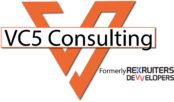Interesting article in Forbes by Jacquelyn Smith In the market for a new job? You’ve probably been urged to “pursue your passions,” “leverage your network,” “tailor and tidy up your resume,” “do your homework,” and “dress for success”—among other things. “These are foundational aspects to job seeking that are timeless,” says Teri Hockett, the chief executive of What’s For Work?, a career site for women. David Parnell, a legal consultant, communication coach and author, agrees: “Much of this has been around long enough to become conventional for a reason: it works,” he says. “If you take a closer look, things like networking, research, and applying to multiple employers are fundamental ‘block and tackle’ types of activities that apply to 80% of the bell curve. They hinge upon casting a broad net; they leverage the law of averages; they adhere to the fundamentals of psychology. It’s no wonder they still work.” But some of it “does get old and overused, because job seeking is as unique and creative as an individual,” says Isa Adney, author of Community College Success and the blog FirstJobOutofCollege.com. “When you ask any professional who has achieved some level of greatness how he or she got there, the journey is always unique, always varied, and rarely cookie-cutter. Most have, in some capacity, followed their passion, used their network, and had a good resume–but those things are usually part of a much bigger picture, and an unpredictable winding path. Instead of always following the exact by-the-book job seeking formulas, most were simply open to possibilities and got really good at whatever it is they were doing.” We’re not saying you should discount or disregard traditional job seeking advice altogether. But it can’t hurt to mix it up and try less conventional approaches until you achieve your goals, Hockett says. “Times are always changing and while it’s always good to follow the basic advice, we also have to get rolling with the times,” says Amanda Abella, a career coach, writer, speaker, and founder of the Gen Y lifestyle blog Grad Meets World. “For instance, group interviews are making a comeback, we’ve got Skype interviews now, or you may interview in front of a panel. All this stuff didn’t happen as often before–so while the same basic stuff applies, we have to take into account all the new dynamics.” Hockett agrees and says if you are going to try some unconventional job seeking methods, you should “always be grounded with solid research and a clear direction of your intentions; then you will be ready for any opportunity to make a connection resulting in a positive impact on a hiring manager.” Parnell says generally speaking, unconventional methods should be used sparingly, judiciously and only when necessary. “And when you do decide to use them, factor comprehensively by recognizing things like industry standards, personalities involved, and the general ilk of the position’s responsibilities, before strategizing.” Here are 10 unconventional (but very effective) tips for job seekers: 1. Be vulnerable: It’s okay to ask people for advice! “Too often we think we have to sell ourselves as this know-it-all hot-shot to get a job, but I have found the best way to build relationships with people whom you’d like to work with (or for) is to start by being vulnerable, sharing your admiration for their work, and asking for advice,” Adney says. “I recommend doing this with professionals at companies you’d love to work for, long before they have a job opening you apply for.” 2. Don’t always follow your passion: “Follow your passion” is one of the most common pieces of career wisdom, says Cal Newport, author of So Good They Can’t Ignore You: Why Skills Trump Passion in the Quest for Work You Love. “It’s also wrong.” If you study people who end up loving their work, most of them did not follow a pre-existing passion, he says. “Instead, their passion for the work developed over time as they got better at what they did and took more control over their career.” Adney agrees to some extent. She doesn’t think job seekers should completely disregard their passions–but does believe that “challenging this conventional wisdom is vital, especially since studies still show most Americans are unhappy in their jobs.” 3. Create your position: Don’t just sit around waiting for your “dream job” to open. Study the industry or field that you’re looking to move into, and determine a company or two that you’d like to work for, Hockett says. “Then figure out their challenges through relationships or public information. With this, you can craft a solution for them that you can share directly or publically through a blog, for instance. The concept here is to get noticed through offering a solution to help them with no expectation of anything in return.” 4. Learn how to listen: Job seekers are so caught up in conveying a certain message and image to the employer that they often fail to listen. “Powerful listening is a coaching tool, as well as an amazing skill to have in your life,” Abella says. “The art of conversation lies in knowing how to listen– and the same applies to job interviews. Know when to talk, when to stop talking, and when to ask questions.” When you practicing for interviews, don’t just rehearse your answers to questions like, “can you tell me about yourself?” “why do you want this job?” and “what are your greatest strengths and weaknesses?” Practice listening carefully and closely without interrupting. 5. Start at the top and move down: We learned from Chris Gardner (played by Will Smith) in The Pursuit of Happyness (the biographical film based on Gardner’s life) that you need to start from the top and move down. “Why approach human resources in hopes that your resume makes it to the hiring authority?” Parnell says. “Just get it there yourself. Be careful to use tact, respect and clarity during the process, but nevertheless, go straight to the decision maker.” 6. Build a relationship with the administrative assistant: While you want to start at
Interesting article in Forbes by Jacquelyn Smith In the market for a new job? You’ve probably been urged to “pursue your passions,” “leverage your network,” “tailor and tidy up your resume,” “do your homework,” and “dress for success”—among other things. “These are foundational aspects to job seeking that are timeless,” says Teri Hockett, the chief executive of What’s For Work?, a career site for women. David Parnell, a legal consultant, communication coach and author, agrees: “Much of this has been around long enough to become conventional for a reason: it works,” he says. “If you take a closer look, things like networking, research, and applying to multiple employers are fundamental ‘block and tackle’ types of activities that apply to 80% of the bell curve. They hinge upon casting a broad net; they leverage the law of averages; they adhere to the fundamentals of psychology. It’s no wonder they still work.” But some of it “does get old and overused, because job seeking is as unique and creative as an individual,” says Isa Adney, author of Community College Success and the blog FirstJobOutofCollege.com. “When you ask any professional who has achieved some level of greatness how he or she got there, the journey is always unique, always varied, and rarely cookie-cutter. Most have, in some capacity, followed their passion, used their network, and had a good resume–but those things are usually part of a much bigger picture, and an unpredictable winding path. Instead of always following the exact by-the-book job seeking formulas, most were simply open to possibilities and got really good at whatever it is they were doing.” We’re not saying you should discount or disregard traditional job seeking advice altogether. But it can’t hurt to mix it up and try less conventional approaches until you achieve your goals, Hockett says. “Times are always changing and while it’s always good to follow the basic advice, we also have to get rolling with the times,” says Amanda Abella, a career coach, writer, speaker, and founder of the Gen Y lifestyle blog Grad Meets World. “For instance, group interviews are making a comeback, we’ve got Skype interviews now, or you may interview in front of a panel. All this stuff didn’t happen as often before–so while the same basic stuff applies, we have to take into account all the new dynamics.” Hockett agrees and says if you are going to try some unconventional job seeking methods, you should “always be grounded with solid research and a clear direction of your intentions; then you will be ready for any opportunity to make a connection resulting in a positive impact on a hiring manager.” Parnell says generally speaking, unconventional methods should be used sparingly, judiciously and only when necessary. “And when you do decide to use them, factor comprehensively by recognizing things like industry standards, personalities involved, and the general ilk of the position’s responsibilities, before strategizing.” Here are 10 unconventional (but very effective) tips for job seekers: 1. Be vulnerable: It’s okay to ask people for advice! “Too often we think we have to sell ourselves as this know-it-all hot-shot to get a job, but I have found the best way to build relationships with people whom you’d like to work with (or for) is to start by being vulnerable, sharing your admiration for their work, and asking for advice,” Adney says. “I recommend doing this with professionals at companies you’d love to work for, long before they have a job opening you apply for.” 2. Don’t always follow your passion: “Follow your passion” is one of the most common pieces of career wisdom, says Cal Newport, author of So Good They Can’t Ignore You: Why Skills Trump Passion in the Quest for Work You Love. “It’s also wrong.” If you study people who end up loving their work, most of them did not follow a pre-existing passion, he says. “Instead, their passion for the work developed over time as they got better at what they did and took more control over their career.” Adney agrees to some extent. She doesn’t think job seekers should completely disregard their passions–but does believe that “challenging this conventional wisdom is vital, especially since studies still show most Americans are unhappy in their jobs.” 3. Create your position: Don’t just sit around waiting for your “dream job” to open. Study the industry or field that you’re looking to move into, and determine a company or two that you’d like to work for, Hockett says. “Then figure out their challenges through relationships or public information. With this, you can craft a solution for them that you can share directly or publically through a blog, for instance. The concept here is to get noticed through offering a solution to help them with no expectation of anything in return.” 4. Learn how to listen: Job seekers are so caught up in conveying a certain message and image to the employer that they often fail to listen. “Powerful listening is a coaching tool, as well as an amazing skill to have in your life,” Abella says. “The art of conversation lies in knowing how to listen– and the same applies to job interviews. Know when to talk, when to stop talking, and when to ask questions.” When you practicing for interviews, don’t just rehearse your answers to questions like, “can you tell me about yourself?” “why do you want this job?” and “what are your greatest strengths and weaknesses?” Practice listening carefully and closely without interrupting. 5. Start at the top and move down: We learned from Chris Gardner (played by Will Smith) in The Pursuit of Happyness (the biographical film based on Gardner’s life) that you need to start from the top and move down. “Why approach human resources in hopes that your resume makes it to the hiring authority?” Parnell says. “Just get it there yourself. Be careful to use tact, respect and clarity during the process, but nevertheless, go straight to the decision maker.” 6. Build a relationship with the administrative assistant: While you want to start at




